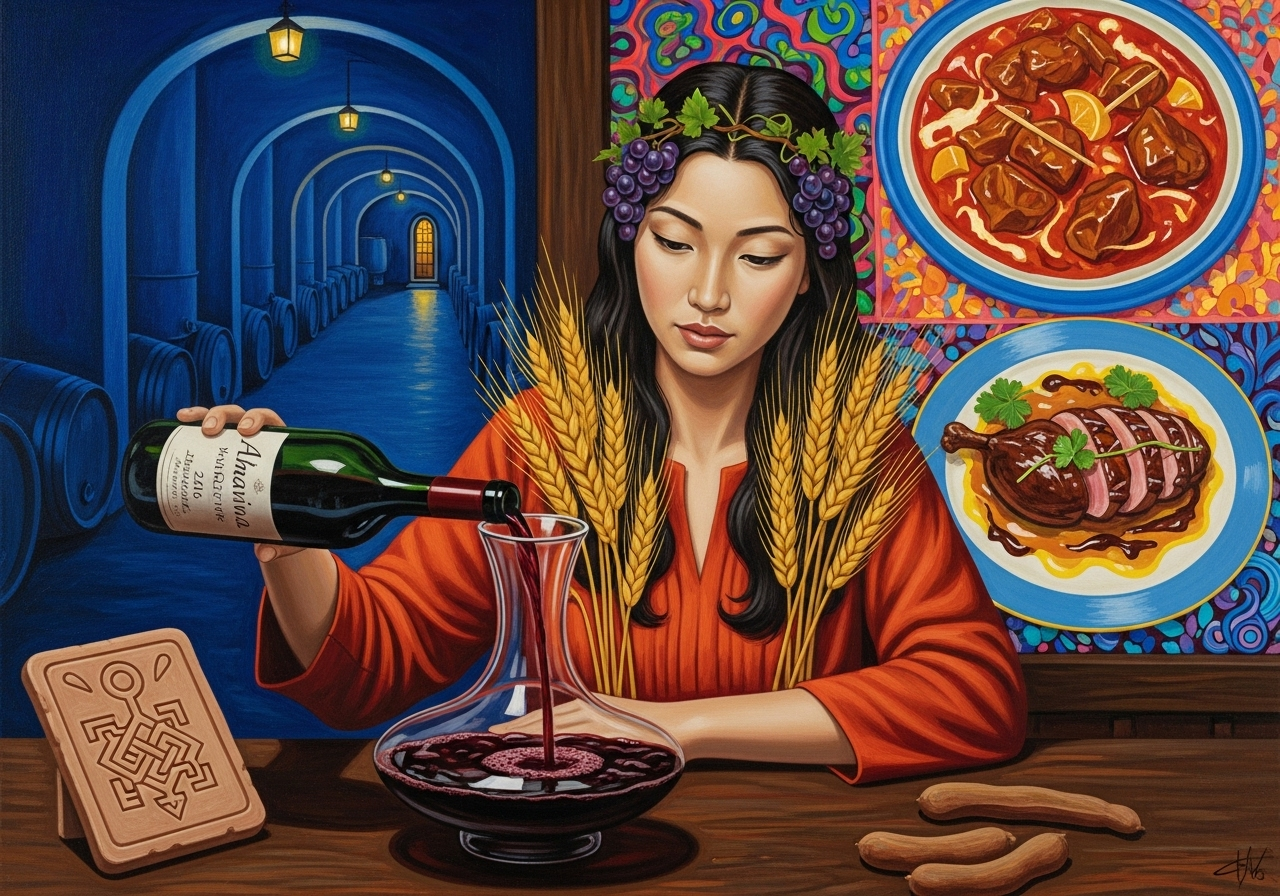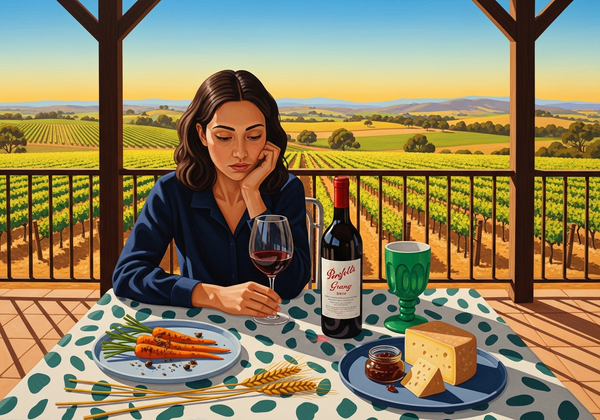Whispers of the Andes: Almaviva 2016
Discover unique Almaviva 2016 food pairing ideas—from venison with maqui berries to Kashmiri lamb—told in the voice of a goddess of the vine.

The glass holds a garnet pool rimmed with ruby, as if the Andes themselves bled sunset into the wine. I pour it into a tall Bordeaux stem, watching as its edges shimmer with promise. At 16–18 °C, it begins with reticence—cassis, a wisp of dried rose, cedar husk—but give it an hour in the decanter, and it unfurls like a dream interpreted after long silence. Tannins—fine as parchment, firm as river stones—soften their grip, allowing the perfume to rise. Patience is the key: I, too, spend half my year below, waiting for spring’s return, and I know the reward of restraint.
Born from the gravel soils of Puente Alto, Almaviva is a child of two worlds: Bordeaux savoir-faire and Chilean earth. Baron Philippe de Rothschild joined hands with Viña Concha y Toro to create this estate, where Cabernet Sauvignon leads, steadied by Carmenère’s spice and Merlot’s flesh. The Andes lend their cool breath each night, tempering the day’s heat, coaxing a slow ripening that binds freshness to ripeness. Here, where rivers once ran and left behind stone and sand, the vine roots itself in both struggle and grace.
The 2016 vintage, cooler than its forebears, is thoughtful rather than bold. Blackcurrant and blueberry are braided with violet and tobacco, beneath which runs the quiet hum of forest floor. Acidity rings like a taut string; tannin offers a gentle drying embrace. French oak leaves only a murmur of spice—clove, cedar, faint chocolate. Its finish lingers, not insistent but persuasive, a story that will only deepen as decades turn.
Fire, marrow, and the mountain’s echo
Almaviva 2016 finds its truest mirror in marrow-rich cuts touched by flame. Consider slow-grilled lamb shoulder rubbed with native Chilean merken spice: the smoky heat and herbal edge coax forward the wine’s graphite and dark fruit, while fat softens its grip. Or a venison loin, roasted until its juices run, served with maqui berry reduction—a fruit of the Andes, sharp and wild—that intertwines with the wine’s cassis core. Here the meat is not mere partner but chorus, amplifying the vine’s song.
Journeys beyond Chile: a dialogue of spice
This wine speaks fluently with the language of distant cuisines. In a Kashmiri rogan josh, lamb steeped in yogurt and perfumed with cardamom and clove, the slow-simmered richness finds balance in Almaviva’s acidity, while its subtle oak spice resonates with the curry’s perfume. Or in duck breast glazed with tamarind, the tart-sweet lacquer pulls forward the wine’s fruit while tannin threads through the bird’s rich flesh. These encounters are not predictable—they are crossings of borders, where vineyard and kitchen meet in revelation.
Earth-born luxuries for a goddess of vines
I have always been the keeper of the vine, and I know its conversation with the earth is eternal. Porcini risotto, infused with truffle shavings, lets the wine’s tannins anchor themselves in umami, while acidity slices through butter and cream. Even humbler fare can be made divine: charred corn with queso fresco, a nod to Chile’s fields, meets the wine with sweetness, smoke, and salt that unlock its hidden floral notes. These dishes prove that the garden, too, carries grandeur.
Side offerings as ritual libations
Think of roasted beets drizzled with walnut oil: their earthiness mirrors the wine’s forest-floor undertones, while the oil’s richness is cleansed by acidity. Or purple potatoes, native to the Andes, layered into a gratin with hints of nutmeg—their sweetness and spice coaxing out the wine’s more elusive tertiary whispers. Such plates are offerings to the glass, libations that honour without overshadowing.
Each pairing is a ritual, not a rule. I, who once endured the silence of the underworld to bring seasons back to earth, tell you: there is no thunderbolt for a misstep. Choose with heart, and the wine will answer. Almaviva 2016 is vivid now, yet it will reward devotion through 2030–2038, when time will embroider its cassis with tobacco, its graphite with truffle, its fruit with the wisdom of age.
Pour it with reverence, in wide glasses, and with patience for its unfolding. Pair it not with fear but with imagination, for this wine is the Andes in liquid form—stone, sun, shadow, and the eternal vine translated into taste.





